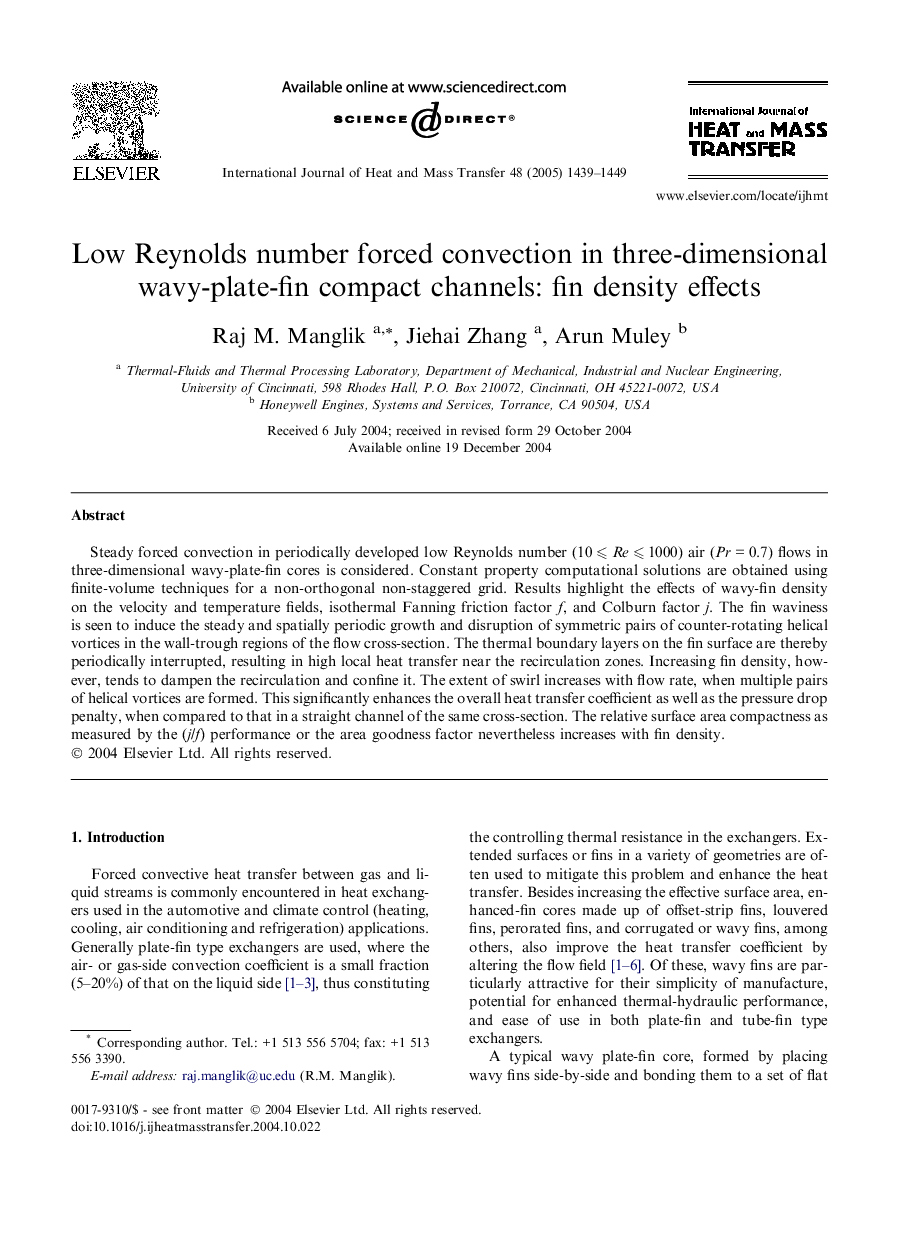| Article ID | Journal | Published Year | Pages | File Type |
|---|---|---|---|---|
| 9691585 | International Journal of Heat and Mass Transfer | 2005 | 11 Pages |
Abstract
Steady forced convection in periodically developed low Reynolds number (10 ⩽ Re ⩽ 1000) air (Pr = 0.7) flows in three-dimensional wavy-plate-fin cores is considered. Constant property computational solutions are obtained using finite-volume techniques for a non-orthogonal non-staggered grid. Results highlight the effects of wavy-fin density on the velocity and temperature fields, isothermal Fanning friction factor f, and Colburn factor j. The fin waviness is seen to induce the steady and spatially periodic growth and disruption of symmetric pairs of counter-rotating helical vortices in the wall-trough regions of the flow cross-section. The thermal boundary layers on the fin surface are thereby periodically interrupted, resulting in high local heat transfer near the recirculation zones. Increasing fin density, however, tends to dampen the recirculation and confine it. The extent of swirl increases with flow rate, when multiple pairs of helical vortices are formed. This significantly enhances the overall heat transfer coefficient as well as the pressure drop penalty, when compared to that in a straight channel of the same cross-section. The relative surface area compactness as measured by the (j/f) performance or the area goodness factor nevertheless increases with fin density.
Related Topics
Physical Sciences and Engineering
Chemical Engineering
Fluid Flow and Transfer Processes
Authors
Raj M. Manglik, Jiehai Zhang, Arun Muley,
